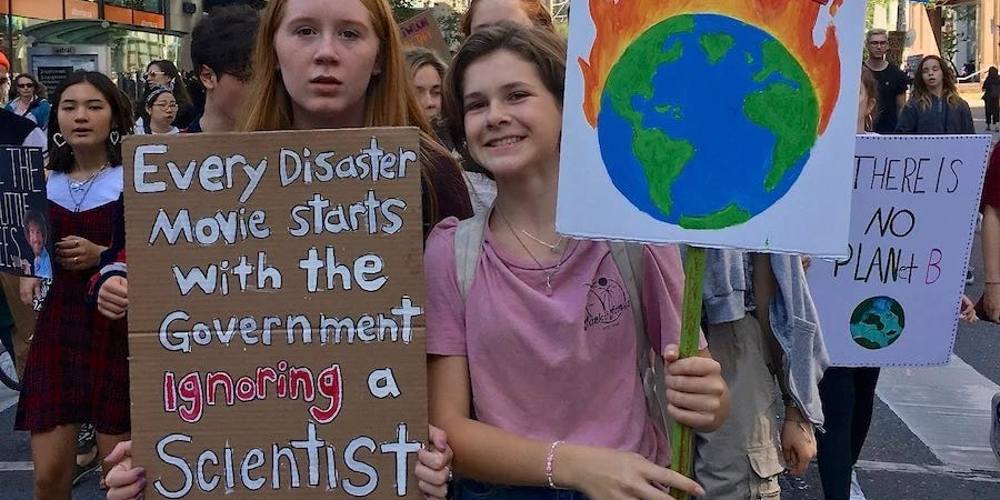![]() (DCNF)—The National Oceanic and Atmospheric Administration (NOAA) has committed to improving the “documentation and transparency” of a key data set frequently cited by activists and policymakers to suggest that climate change is getting worse.
(DCNF)—The National Oceanic and Atmospheric Administration (NOAA) has committed to improving the “documentation and transparency” of a key data set frequently cited by activists and policymakers to suggest that climate change is getting worse.
Roger Pielke Jr., a former environmental studies professor at the University of Colorado, requested that NOAA correct its billion dollar disasters (BDD) dataset in January, alleging that the dataset’s sourcing and methodology are not sufficiently transparent for the metric to inform policy. NOAA responded to Pielke’s correction request on Aug. 21, admitting that the dataset has not undergone external peer review since 2015 and committing to improving its “documentation and transparency” of the dataset’s component parts going forward.
BDD data keeps track of natural disasters that caused $1 billion or more in inflation-adjusted damages going back to 1980, with NOAA and the Biden White House contending that the increasing frequency of BDD events evidences worsening climate change. However, BDD is an economic statistic rather than an indicator of changing meteorological conditions; the same exact hurricane could hit the same exact city 100 years apart, but the damage totals for each storm would be vastly different given that there are more assets to be destroyed in harm’s way now than there were a century ago.
NOAA BDD RFC Response by Nick Pope on Scribd:
In response to Pielke’s request, NOAA said it would start disclosing more of the publicly available sources that it uses to craft its data, formalize and disclose the steps the agency takes to ensure the BDD data’s “robustness” and set up a peer-review system that is consistent with NOAA’s own policies.
“NOAA made some difficult admissions here about the fact that the BDD tabulation has failed to meet their standards for scientific integrity and information quality,” Pielke, who believes climate change is a serious problem, told the DCNF. “The BDD tabulation is clever marketing and the media love it. However, no one should mistake it as science.”
Pielke addressed NOAA’s response to his request in an Aug. 21 post to his Substack page, writing that “these responses and admissions clearly indicate that the NOAA tabulation is not suitable for research.” He added that NOAA’s response to his correction request concedes that “historical versions of the tabulation (and thus new entries and changes to it) are only available since 2020,” meaning “that 40 of (almost) 44 years of the tabulation lack basic information on the loss estimates and how they were originally compiled.”
While BDD’s critics contend it is a flawed metric to use as a proxy for the intensity of climate change, the statistic was used in a landmark climate report published by the Biden administration in 2023 and cited as evidence to support the administration’s freeze on approvals for new liquified natural gas export terminals by Deputy Energy Secretary David Turk in written testimony submitted to Congress in February.
“NOAA notes that the RFC [request for correction] did not identify specific data points that need correcting. In conducting its review of the RFC, NOAA has not identified any data inaccuracies in the Billion Dollar Disaster data set,” an agency spokesperson said in a statement shared with the Daily Caller News Foundation. “NOAA has determined the U.S. Billion-Dollar Weather and Climate Disasters data set meets the threshold for influential scientific information (ISI) under NOAA’s Information Quality Guidelines. As a result, NOAA will review and update its management practices for the data set.”
The actions NOAA will take to improve its BDD data include “disclosing and facilitating access to several publicly available input sources; disclosing and facilitating access to methodologically relevant factors, such as insurance penetration rates and underlying economic data; formalizing procedures currently used to check the robustness of NOAA’s analyses, and stating these on the Billion Dollar Disaster website; and, instituting a peer-review cycle consistent with the data set’s ISI determination,” NOAA added in its statement.
All content created by the Daily Caller News Foundation, an independent and nonpartisan newswire service, is available without charge to any legitimate news publisher that can provide a large audience. All republished articles must include our logo, our reporter’s byline and their DCNF affiliation. For any questions about our guidelines or partnering with us, please contact [email protected].

It’s becoming increasingly clear that fiat currencies across the globe, including the U.S. Dollar, are under attack. Paper money is losing its value, translating into insane inflation and less value in our life’s savings.
Genesis Gold Group believes physical precious metals are an amazing option for those seeking to move their wealth or retirement to higher ground. Whether Central Bank Digital Currencies replace current fiat currencies or not, precious metals are poised to retain or even increase in value. This is why central banks and mega-asset managers like BlackRock are moving much of their holdings to precious metals.
As a Christian company, Genesis Gold Group has maintained a perfect 5 out of 5 rating with the Better Business Bureau. Their faith-driven values allow them to help Americans protect their life’s savings without the gimmicks used by most precious metals companies. Reach out to them today to see how they can streamline the rollover or transfer of your current and previous retirement accounts.


